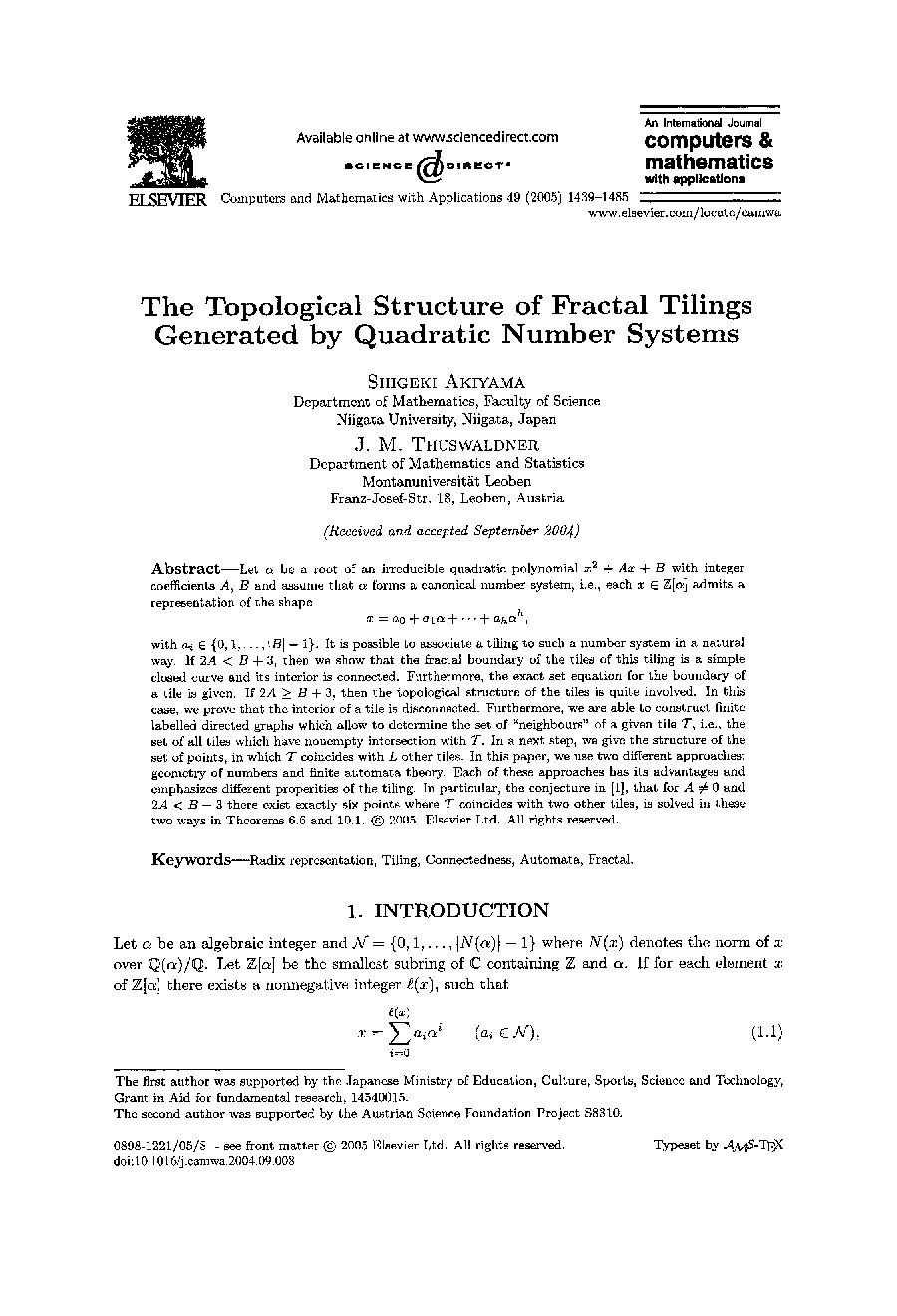| Article ID | Journal | Published Year | Pages | File Type |
|---|---|---|---|---|
| 9662416 | Computers & Mathematics with Applications | 2005 | 47 Pages |
Abstract
Let α be a root of an irreducible quadratic polynomial x2 + Ax + B with integer coefficients A, B and assume that α forms a canonical number system, i.e., each x â â¤[α] admits a representation of the shape x=a0+a1α+â¯+ahαh,with ai â {0, 1,â¦,|B| - 1}. It is possible to associate a tiling to such a number system in a natural way. If 2A < B + 3, then we show that the fractal boundary of the tiles of this tiling is a simple closed curve and its interior is connected. Furthermore, the exact set equation for the boundary of a tile is given. If 2A ⥠B + 3, then the topological structure of the tiles is quite involved. In this case, we prove that the interior of a tile is disconnected. Furthermore, we are able to construct finite labelled directed graphs which allow to determine the set of “neighbours” of a given tile T, i.e., the set of all tiles which have nonempty intersection with T. In a next step, we give the structure of the set of points, in which T coincides with L other tiles. In this paper, we use two different approaches: geometry of numbers and finite automata theory. Each of these approaches has its advantages and emphasizes different properities of the tiling. In particular, the conjecture in [1], that for A â 0 and 2A < B + 3 there exist exactly six points where T coincides with two other tiles, is solved in these two ways in Theorems 6.6 and 10.1.
Related Topics
Physical Sciences and Engineering
Computer Science
Computer Science (General)
Authors
Shigeki Akiyama, J.M. Thuswaldner,
